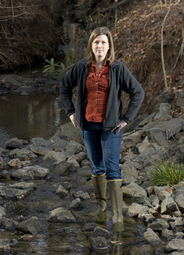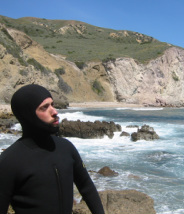I can’t believe I am back in the lab! I participated in two research summer programs previously, so I thought I would know what to expect this summer. . .
Already the Howard Hughes Research Fellows program has surpassed my expectations! I was assigned to the absolute BEST lab (for me at least)! Fall semester I took a seminar course on biological research at Duke and for my final project I focused on the work of Dr. Emily Bernhardt. And now I am working in her lab. Awesome, right?

The Bernhardt Lab is interested in “aquaterrestrial biogeochemical” which includes the movement of nutrients and even pollutants through ecosystems. Dr. Bernhardt is also involved with the Center for the Environmental Implications of Nanotechnology (CEINT) – which is where my project comes in. I will be looking at the role of nanoparticles in managed human ecosystems . . . namely wastewater treatment plants (WWTP).

So, the simplified version: Nanoparticles are just very very tiny particles (nanometer = one billionth of a meter) that are used in a wide array of consumer products from cosmetics to paints. Nanoparticles have many potential benefits, but little is known about their toxicological or environmental effects (hence CEINT). Plenty of laboratory studies that simulate ecosystems have already been conducted, but very few have looked at how large dynamic natural systems will react to these particles. What we need is an ecosystem that is (potentially) already contaminated by nanoparticles. Like many other pollutants, nanomaterials will ultimately end up at WWTPs. There are several organisms that live in wastewater treatment plants from duckweed to even clams and we will be testing these organisms to see if nanomaterials are traveling up the food chain and what that might mean for other ecosystems.


I expect this summer to be challenging, fun, and exciting. But most importantly, I hope to get a fantastic nature self portrait like all the people of the Bernhardt Lab seem to have. As the wise Bill Nye said many times, “Science rules.”
